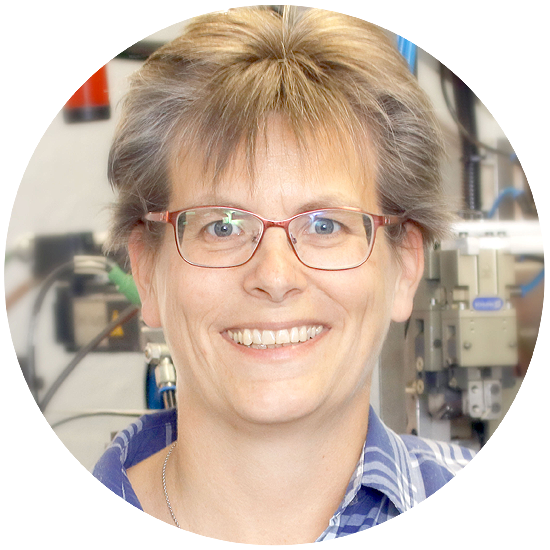Do you need a quotation or advice about our processes and services?
Our technical project manager Caroline Deutschmann, is happy to answer any of your questions.
Contact her directly at +49 (0)2352 9781 0.

PARTS CLEANING
COMMERCIAL AND INDUSTRIAL PARTS CLEANING/CONTRACT CLEANING
Seltertech offers customised cleaning for industrial parts (components) / industrial contract cleaning and surface cleaning for metal parts. These processes can be done using the following methods of cleaning: oil removal, degreasing, fine cleaning, micro-abrasive cleaning, preservatives, oiling.
The parts are cleaned using either of two semi-automatic systems – alkaline or PER. Cleaning these parts creates a balanced starting conditions for further processing to be done. The pieces can be cleaned individually or in bulks, using carts or racks. Please contact us for more details.
ESSENTIALS OF PARTS CLEANING / CONTRACT CLEANING
PROCEDURE
Non-polar solvents CHCs have a very high solvency power on non-polar oils and weak polar lipids (polarity of a solvent). Without additional mechanics, component cleaning is initially based solely on physical solvent processes. PER is an excellent solvent for fats, oils, resin, pitch, wax, asphalt, bitumen and paraffin. In most cases, placing the part to be cleaned in solvent vapour is enough to achieve this. The solvent condenses until a balanced temperature is reached on the colder surface of the work-piece. Oil and grease is dissolved when the solvent condenses. The solution then drips from the parts (vapour degreasing). If large amounts of oil drips away before desired results are achieved, an alternative is to degrease the work pieces using a spraying or dipping process. The use of CHC for cleaning parts is currently allowed only in closed facilities, regardless of the cleaning process.
Inorganic contaminants, such as metal residue, chippings, polishing agents, pigments and corrosion products can only be removed using a suitable mechanical cleaning option or by solvent-water-emulsions. Salts and other polar substances can be removed during component cleaning without additional mechanics. Therefore, if they are sticking to the dirty layer, they will lose their adhesive power on the work piece surface when an oil or grease solvent is used. The relatively high boiling point and high vapour temperature dissolves even high-melting, oxidised or encrusted grease and similar debris. The use of chlorinated hydrocarbon generally enables effective cleaning of components without corrosion, oxidation, discolouration, matting or other damages to the work piece surface. Metal degreasing with chlorinated hydrocarbons is especially effective on impurities and very complex geometries (e.g. long tubes with small diameter, which are cleaned by drawing oils).
The compatibility of the material has to be checked very carefully. When cleaning metal parts, usually there are no chemical reactions. Surface cleaning of aluminium parts is easily achieved with perchlorethylene. CHCs are well suited for cleaning glass and ceramics. When cleaning industrial components such as elastomer and painted surfaces, CHC should not be used in principle, since this can lead to dissolution of the surface.
TECHNICAL PARAMETER
- Seltertech provides a semi-automatic washing system using an alkaline cleaner – here, the components can be cleaned in bulk or in baskets
- Seltertech provides a second semi-automatic washing system with PER (CHC) cleaning agent that works with baskets or on racks in baskets
ADVANTAGES
- Removal of impurities caused by grease, oil, chippings or other debris
- Consistent starting point for subsequent processing stage
- Final processing before packaging for a clean product or production finish
GUSTAV SELTER GmbH & Co. KG
Hauptstraße 2 – 6
58762 Altena
Germany
© COPYRIGHT 2016-2023 GUSTAV SELTER GMBH & CO. KG

